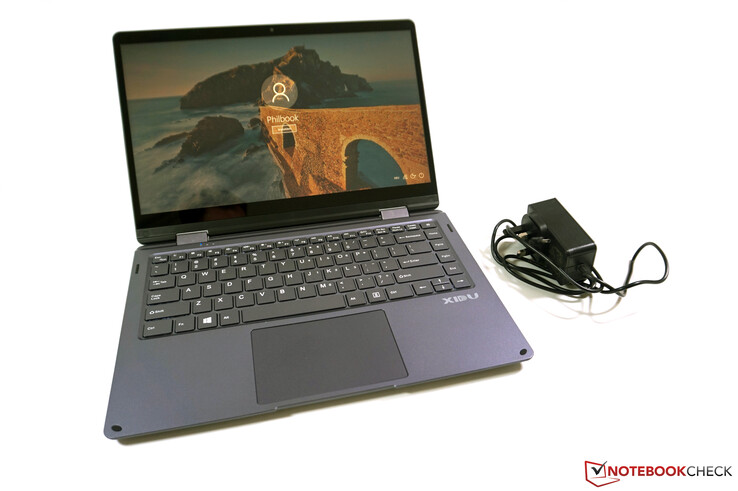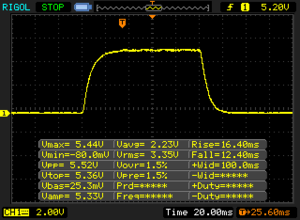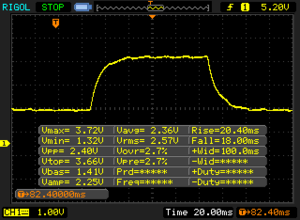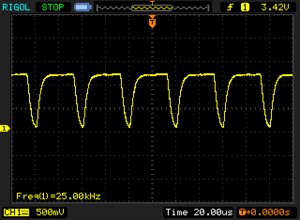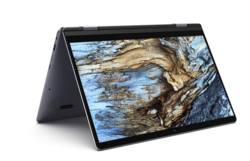XIDU PhilBook Max翻转本评测:触摸屏太暗,性能太差
| SD Card Reader | |
| average JPG Copy Test (av. of 3 runs) | |
| Average of class Convertible (28.1 - 209, n=23, last 2 years) | |
| XIDU PhilBook Max (Toshiba Exceria Pro M501 64 GB UHS-II) | |
| Chuwi AeroBook 13 inch 2019 (Toshiba Exceria Pro UHS-II SDXC) | |
| maximum AS SSD Seq Read Test (1GB) | |
| Average of class Convertible (28.9 - 253, n=22, last 2 years) | |
| Medion Akoya E4253-30025387 (Toshiba Exceria Pro M501 microSDXC 64GB) | |
| XIDU PhilBook Max (Toshiba Exceria Pro M501 64 GB UHS-II) | |
| Chuwi AeroBook 13 inch 2019 (Toshiba Exceria Pro UHS-II SDXC) | |
» Notebookcheck多媒体笔记本电脑Top 10排名
» Notebookcheck游戏笔记本电脑Top 10排名
» Notebookcheck低价办公/商务笔记本电脑Top 10排名
» Notebookcheck高端办公/商务笔记本电脑Top 10排名
» Notebookcheck工作站笔记本电脑Top 10排名
» Notebookcheck亚笔记本电脑Top 10排名
» Notebookcheck超级本产品Top 10排名
» Notebookcheck变形本产品Top 10排名
» Notebookcheck平板电脑Top 10排名
» Notebookcheck智能手机Top 10排名
» Notebookcheck评测过最出色的笔记本电脑屏幕
» Notebookcheck售价500欧元以下笔记本电脑Top 10排名
» Notebookcheck售价300欧元以下笔记本电脑Top 10排名
| Networking | |
| iperf3 transmit AX12 | |
| Medion Akoya E4253-30025387 | |
| XIDU PhilBook Max | |
| Chuwi LapBook Pro | |
| Chuwi AeroBook 13 inch 2019 | |
| iperf3 receive AX12 | |
| Chuwi AeroBook 13 inch 2019 | |
| Medion Akoya E4253-30025387 | |
| XIDU PhilBook Max | |
| Chuwi LapBook Pro | |
| |||||||||||||||||||||||||
Brightness Distribution: 78 %
Center on Battery: 178 cd/m²
Contrast: 1193:1 (Black: 0.15 cd/m²)
ΔE ColorChecker Calman: 6 | ∀{0.5-29.43 Ø4.78}
calibrated: 4.3
ΔE Greyscale Calman: 5 | ∀{0.09-98 Ø5}
61.6% sRGB (Argyll 1.6.3 3D)
39.4% AdobeRGB 1998 (Argyll 1.6.3 3D)
43.6% AdobeRGB 1998 (Argyll 3D)
63% sRGB (Argyll 3D)
42.16% Display P3 (Argyll 3D)
Gamma: 2
CCT: 6197 K
| XIDU PhilBook Max CMN N140HCA-EAC, , 1920x1080, 14.1" | Chuwi LapBook Pro BOE CQ HV140FHNM-N61, , 1920x1080, 14" | Chuwi AeroBook 13 inch 2019 BOE BOE0719, , 1920x1080, 13.3" | Medion Akoya E4253-30025387 Chi Mei N140HCA-EAB, , 1920x1080, 14" | |
|---|---|---|---|---|
| Display | 62% | 49% | -3% | |
| Display P3 Coverage (%) | 42.16 | 73 73% | 67.3 60% | 40.96 -3% |
| sRGB Coverage (%) | 63 | 96.1 53% | 87.6 39% | 61.1 -3% |
| AdobeRGB 1998 Coverage (%) | 43.6 | 70.3 61% | 64.1 47% | 42.37 -3% |
| Response Times | -5% | 7% | -3% | |
| Response Time Grey 50% / Grey 80% * (ms) | 38.4 ? | 42 ? -9% | 34 ? 11% | 42 ? -9% |
| Response Time Black / White * (ms) | 28.8 ? | 29 ? -1% | 28 ? 3% | 28 ? 3% |
| PWM Frequency (Hz) | 25000 ? | 200 ? | 2000 ? | 24500 ? |
| Screen | -11% | 7% | -14% | |
| Brightness middle (cd/m²) | 179 | 297 66% | 307.6 72% | 262 46% |
| Brightness (cd/m²) | 175 | 268 53% | 295 69% | 242 38% |
| Brightness Distribution (%) | 78 | 77 -1% | 90 15% | 87 12% |
| Black Level * (cd/m²) | 0.15 | 0.625 -317% | 0.34 -127% | 0.505 -237% |
| Contrast (:1) | 1193 | 475 -60% | 905 -24% | 519 -56% |
| Colorchecker dE 2000 * | 6 | 5.23 13% | 7.31 -22% | 5.49 8% |
| Colorchecker dE 2000 max. * | 20.2 | 9.53 53% | 11.92 41% | 10.63 47% |
| Colorchecker dE 2000 calibrated * | 4.3 | 3.94 8% | ||
| Greyscale dE 2000 * | 5 | 6.72 -34% | 6.8 -36% | 4.84 3% |
| Gamma | 2 110% | 2.38 92% | 1.909 115% | 2.3 96% |
| CCT | 6197 105% | 7015 93% | 7695 84% | 6347 102% |
| Color Space (Percent of AdobeRGB 1998) (%) | 39.4 | 63 60% | 57 45% | 39 -1% |
| Color Space (Percent of sRGB) (%) | 61.6 | 96 56% | 87 41% | 61 -1% |
| Total Average (Program / Settings) | 15% /
4% | 21% /
15% | -7% /
-10% |
* ... smaller is better
Display Response Times
| ↔ Response Time Black to White | ||
|---|---|---|
| 28.8 ms ... rise ↗ and fall ↘ combined | ↗ 16.4 ms rise | |
| ↘ 12.4 ms fall | ||
| The screen shows relatively slow response rates in our tests and may be too slow for gamers. In comparison, all tested devices range from 0.1 (minimum) to 240 (maximum) ms. » 75 % of all devices are better. This means that the measured response time is worse than the average of all tested devices (20.2 ms). | ||
| ↔ Response Time 50% Grey to 80% Grey | ||
| 38.4 ms ... rise ↗ and fall ↘ combined | ↗ 20.4 ms rise | |
| ↘ 18 ms fall | ||
| The screen shows slow response rates in our tests and will be unsatisfactory for gamers. In comparison, all tested devices range from 0.165 (minimum) to 636 (maximum) ms. » 56 % of all devices are better. This means that the measured response time is worse than the average of all tested devices (31.6 ms). | ||
Screen Flickering / PWM (Pulse-Width Modulation)
| Screen flickering / PWM detected | 25000 Hz | ≤ 20 % brightness setting | |
The display backlight flickers at 25000 Hz (worst case, e.g., utilizing PWM) Flickering detected at a brightness setting of 20 % and below. There should be no flickering or PWM above this brightness setting. The frequency of 25000 Hz is quite high, so most users sensitive to PWM should not notice any flickering. In comparison: 53 % of all tested devices do not use PWM to dim the display. If PWM was detected, an average of 8118 (minimum: 5 - maximum: 343500) Hz was measured. | |||
Cinebench R15 Loop
| Cinebench R15 | |
| CPU Single 64Bit | |
| Average of class Convertible (149.8 - 317, n=56, last 2 years) | |
| Medion Akoya E4253-30025387 | |
| Chuwi LapBook Pro | |
| Chuwi AeroBook 13 inch 2019 | |
| XIDU PhilBook Max | |
| Average Intel Celeron J3355 (n=1) | |
| CPU Multi 64Bit | |
| Average of class Convertible (478 - 4830, n=59, last 2 years) | |
| Chuwi LapBook Pro | |
| Medion Akoya E4253-30025387 | |
| Chuwi AeroBook 13 inch 2019 | |
| XIDU PhilBook Max | |
| Average Intel Celeron J3355 (n=1) | |
| PCMark 10 - Score | |
| Average of class Convertible (3229 - 9125, n=53, last 2 years) | |
| Chuwi AeroBook 13 inch 2019 | |
| Medion Akoya E4253-30025387 | |
| XIDU PhilBook Max | |
| Average Intel Celeron J3355, Intel HD Graphics 500 (n=1) | |
| XIDU PhilBook Max FORESEE 128GB O1229B | Chuwi LapBook Pro 64 GB eMMC Flash | Chuwi AeroBook 13 inch 2019 Netac SSD 256GB | Medion Akoya E4253-30025387 64 GB eMMC Flash | Average FORESEE 128GB O1229B | Average of class Convertible | |
|---|---|---|---|---|---|---|
| CrystalDiskMark 5.2 / 6 | -66% | 80% | -73% | 13% | 745% | |
| Write 4K (MB/s) | 43.94 | 13.46 -69% | 81.8 86% | 6.435 -85% | 48 ? 9% | 136.8 ? 211% |
| Read 4K (MB/s) | 20.35 | 7.071 -65% | 33.97 67% | 5.91 -71% | 15.4 ? -24% | 64.4 ? 216% |
| Write Seq (MB/s) | 105.3 | 422.4 | 66.7 | 347 ? | 2516 ? | |
| Read Seq (MB/s) | 235.5 | 502 | 268.9 | 422 ? | 2904 ? | |
| Write 4K Q32T1 (MB/s) | 82.2 | 14.68 -82% | 152.9 86% | 7.795 -91% | 100.7 ? 23% | 422 ? 413% |
| Read 4K Q32T1 (MB/s) | 102.5 | 24.31 -76% | 175.4 71% | 22.76 -78% | 98.2 ? -4% | 548 ? 435% |
| Write Seq Q32T1 (MB/s) | 256.1 | 114.2 -55% | 464.9 82% | 83 -68% | 346 ? 35% | 3931 ? 1435% |
| Read Seq Q32T1 (MB/s) | 281.1 | 140.7 -50% | 530 89% | 150 -47% | 409 ? 45% | 5439 ? 1835% |
| Write 4K Q8T8 (MB/s) | 121.9 | 162.4 ? 33% | 825 ? 577% | |||
| Read 4K Q8T8 (MB/s) | 133.8 | 114 ? -15% | 1256 ? 839% |
| 3DMark - 1920x1080 Fire Strike Graphics | |
| Average of class Convertible (1185 - 25992, n=56, last 2 years) | |
| Chuwi AeroBook 13 inch 2019 | |
| Medion Akoya E4253-30025387 | |
| Chuwi LapBook Pro | |
| Average Intel HD Graphics 500 (293 - 444, n=8) | |
| XIDU PhilBook Max | |
| low | med. | high | ultra | |
|---|---|---|---|---|
| Dota 2 Reborn (2015) | 27.6 | 15.3 | 5.6 | 5.1 |
| X-Plane 11.11 (2018) | 7.6 | 4.7 | 4.3 |
(±) The maximum temperature on the upper side is 44.3 °C / 112 F, compared to the average of 35.4 °C / 96 F, ranging from 19.6 to 60 °C for the class Convertible.
(±) The bottom heats up to a maximum of 42.8 °C / 109 F, compared to the average of 36.8 °C / 98 F
(+) In idle usage, the average temperature for the upper side is 23.9 °C / 75 F, compared to the device average of 30.3 °C / 87 F.
(+) The palmrests and touchpad are cooler than skin temperature with a maximum of 28.7 °C / 83.7 F and are therefore cool to the touch.
(±) The average temperature of the palmrest area of similar devices was 27.9 °C / 82.2 F (-0.8 °C / -1.5 F).
XIDU PhilBook Max audio analysis
(-) | not very loud speakers (71.3 dB)
Bass 100 - 315 Hz
(-) | nearly no bass - on average 27.2% lower than median
(±) | linearity of bass is average (8% delta to prev. frequency)
Mids 400 - 2000 Hz
(±) | higher mids - on average 6% higher than median
(±) | linearity of mids is average (11.6% delta to prev. frequency)
Highs 2 - 16 kHz
(+) | balanced highs - only 2.6% away from median
(±) | linearity of highs is average (7.4% delta to prev. frequency)
Overall 100 - 16.000 Hz
(±) | linearity of overall sound is average (29.2% difference to median)
Compared to same class
» 87% of all tested devices in this class were better, 3% similar, 10% worse
» The best had a delta of 6%, average was 20%, worst was 57%
Compared to all devices tested
» 87% of all tested devices were better, 3% similar, 11% worse
» The best had a delta of 4%, average was 24%, worst was 134%
Chuwi AeroBook 13 inch 2019 audio analysis
(±) | speaker loudness is average but good (76.7 dB)
Bass 100 - 315 Hz
(-) | nearly no bass - on average 23% lower than median
(+) | bass is linear (5.2% delta to prev. frequency)
Mids 400 - 2000 Hz
(±) | higher mids - on average 8.5% higher than median
(±) | linearity of mids is average (12.7% delta to prev. frequency)
Highs 2 - 16 kHz
(±) | higher highs - on average 8.6% higher than median
(±) | linearity of highs is average (11.2% delta to prev. frequency)
Overall 100 - 16.000 Hz
(-) | overall sound is not linear (37.3% difference to median)
Compared to same class
» 97% of all tested devices in this class were better, 2% similar, 1% worse
» The best had a delta of 5%, average was 18%, worst was 53%
Compared to all devices tested
» 94% of all tested devices were better, 1% similar, 5% worse
» The best had a delta of 4%, average was 24%, worst was 134%
| Off / Standby | |
| Idle | |
| Load |
|
Key:
min: | |
| Battery Runtime - WiFi Websurfing | |
| Average of class Convertible (5.08 - 22, n=58, last 2 years) | |
| Medion Akoya E4253-30025387 | |
| Chuwi LapBook Pro | |
| Chuwi AeroBook 13 inch 2019 | |
| XIDU PhilBook Max | |
Pros
Cons
The XIDU PhilBook Max is currently available for around 400 euros. It comes with a 14.1 inch convertible with a neat case, practical input devices and the most important interfaces. But the two big weaknesses are the display and the performance. Although it is an IPS screen with an actually decent picture impression, the brightness is very low. Together with the reflective screen surface, it is hardly possible to use it in bright rooms or even outdoors.
It is also important to be clear when it comes to performance that the planned tasks must not be too demanding. When updating or installing, the device is fully loaded, so you can forget about multitasking.
Low performance and dark display: The PhilBook Max offers some positive features, but performance is often the limiting factor. Here the competition simply offers more.
The price is still too high in our opinion, at just over 400 Euros. Especially from Chuwi there are better offers in this segment or even for less money.
XIDU PhilBook Max
- 09/25/2019 v7 (old)
Andreas Osthoff




